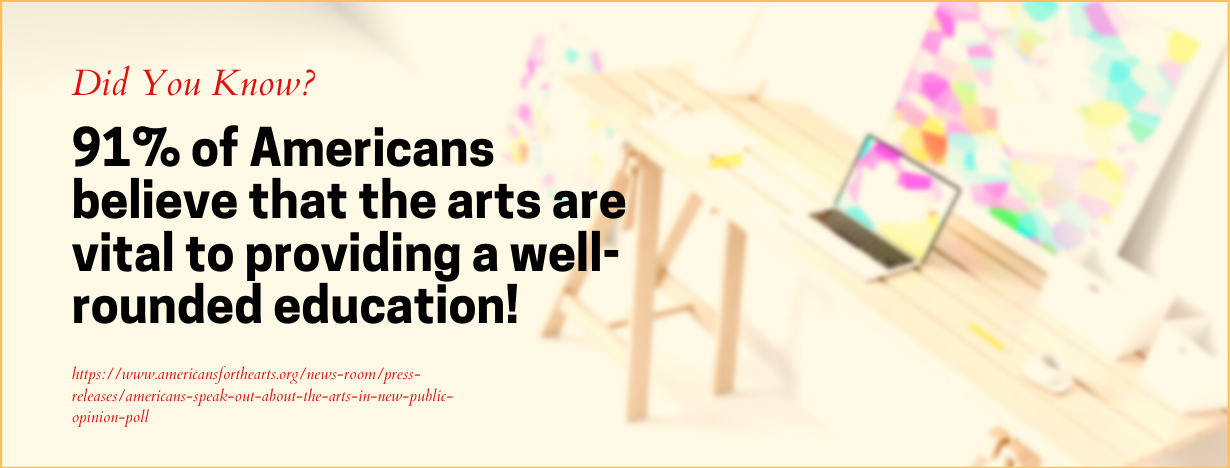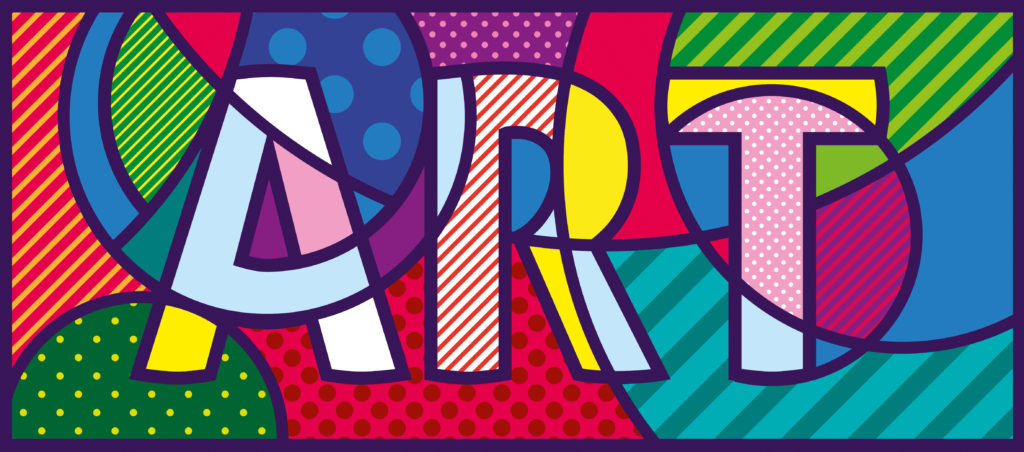Studying and making art can be lots of fun, but sometimes, people might use words to talk about art that you don’t understand. Once you learn what these words mean, you’ll be able to speak more clearly about what makes up a piece of art and what it means to you.

Abstract: A work of art that does not show its subject in a realistic way
Aesthetics: A field of study that deals with what is beautiful.
Calligraphy: Fancy, pretty handwriting that can be made using a brush, quill, or special pen
Canvas: Cloth that has been tightly stretched over a frame to create a surface that you can paint on with oil or acrylic paints
Collage: A work of art made by gluing or otherwise attaching a bunch of small pictures or other things to a surface
Complementary Colors: Colors that appear across from one another on the color wheel and contrast with one another. The basic complementary color pairs are blue and orange, red and green, and yellow and purple.
Digital Art: Art that was made on or can be displayed on a digital device, like a computer or smartphone. Those who work on video projects may use an ai animation video generator to incorporate high-quality graphics into their videos.
Element: A basic component of a work of art. Line, space, shape, value, color, and texture are the basic elements of art.
Fine Art: Art that has been created purely for enjoyment and not for practical use. Fine art is often made by professional artists with a college degree.
Folk Art: Art that has been created by people who are not formally trained artists
Genre: A group of art pieces that are similar in some way. They might all have the same subject or be created using the same types of materials or the same technique.
Graphic Design: The design of art for commercial printing
Intensity: The intensity of a color is how bright or how dull it is.
Intermediate Color: A color created when a secondary color is mixed with a primary color. For example, blue-green and red-orange are intermediate colors.
Medium: The material used to create a work of art, such as clay, ink, or paint. The plural of “medium” is “media.”
Mixed Media: Artwork that is made up of two or more media
Model: A person who poses for a work of art, or a three-dimensional copy of something that’s usually smaller than the original
Mural: Artwork that is created by applying paint or other decorations directly to a wall. Murals are often used in public spaces such as parks.
Neutral Colors: Colors that are neither warm (such as red, orange, and yellow) nor cool (such as blue, green, and purple). Common neutral colors include brown, black, gray, and white.
Paper: A medium made of plant pulp that has been pressed into sheets and allowed to dry
Pattern: The repetition of an element such as a shape or color in a piece of art
Primary Color: A color that can’t be made by mixing other colors. Red, blue, and yellow are commonly known as the primary colors.
Realistic: Artwork that is created to look like the subject looks in real life
Sculpture: The process of creating a three-dimensional piece of art by carving, chiseling, or otherwise working on a physical object such as wood, clay, or stone. The word can also refer to the piece of art itself.
Secondary Color: A color produced by mixing two primary colors. Secondary colors include purple, green, and orange.
Shade: A color that is created by combining a specific hue with the neutral color black
Tint: A color that is created by combining a specific hue with the neutral color white
More Resources
- Art Glossary and Terms
- Albright-Knox Glossary of Terms
- Basic Elements of Art
- KBCC Art Term Glossary
- Crocker Art Museum Glossary of Art Terms
- Glossary of Medieval Art and Architecture
- Key Terms From the 2010s Art World
- Smithsonian Painting Conservation Glossary of Terms
- Tate Collective Art Terms
- University of Arizona Museum of Art Vocabulary of Art Terms
- Woodcock Museum Art Glossary
